Falling in love is easy. Actually, let me clarify that statement: falling in love with a PUPPY is easy. You surf through photos on a rescue site or stroll through a shelter, and your eyes lock on the most adorable face you’ve ever seen. You know you’re sunk. Love at first sight with puppies happens ALL the time. Before you know it, you’re signing the adoption contract and adding a new member to the family. And then it hits you: you have NOTHING ready at home. If this is your first puppy, panic sets in. What do puppies need? How much needs preparation in the house to keep that sweet baby safe? Not to worry. You always get a little time before your new family member comes home. And we’re going to let you know everything you need for preparing for a puppy. Armed with the checklist, you’ll breathe easier.
Preparing for a Puppy: The Home Front
Preparing for a puppy involves more than a trip to the pet store. (That’s just the fun part) You ARE adding a baby to the house, and you need to think along those lines. This means walking through every room and “puppy-proofing” – BEFORE you bring your new family member home. No one wants to get a new puppy home and then turn around for their first visit to the emergency vet. So tune in your eagle vision and think like a chew-happy, inquisitive puppy. You’ll start seeing PLENTY of potential trouble zones.
Puppy Coordination
It’s adorable to watch puppies stumble over their overgrown feet. They haven’t quite figured out where those paws go yet. As they get older, they’ll gain grace and move with a fluid beauty everyone can admire. For now, though, they have plenty of speed – in every direction at once. To prevent the risk of injury, you want to cater to that complete and utter lack of coordination.
- Clear space in rooms so your puppy can play
- If you’re worried about fragile décor, move vases or other objects out of the path of flying feet
- Place baby gates across long staircases
- Fence in-ground pools; for above-ground pools, block access to the ladders or steps
Safety First
Puppies are inquisitive. They poke their noses into everything, attempting to learn as much about the world as possible. And they like to add to that knowledge by chewing. Throw in the fact your new kiddo WILL go through teething phases, and you want to make sure you’re taking every precaution possible. Preparing for a puppy means tucking these hazards out of sight BEFORE you notice them in your pup’s mouth – not after.
- Move electrical cords and wires out of reach
- As an extra precaution, pick up anti-chew spray for any cords
- Place laundry products in a closed cabinet (Dryer sheets are TOXIC)
- Keep socks and shoes in closed locations
- Review every houseplant – are any toxic? If so, move them where your puppy can’t investigate
- Trash cans need seals and locking lids OR a cabinet to hide in
- All cleaning products, foods, and medications need to go into cabinets your puppy can’t reach

Preparing for a Puppy: The Primary Shopping List
Phew! Now you’re ready to hit the pet store. If you’ve had puppies before, you may feel prepared. You may even have a lot of the necessities at home already. (Doggie hand-me-downs ARE a thing) But if this is your first puppy, you’re probably standing at the front of the store, confronted by aisles and aisles of products, feeling overwhelmed. How much does a puppy need? What’s considered a necessity when preparing for a puppy, and what’s a luxury? Can some things wait for down the road? Before you line up twenty shopping carts, let’s go over the must-haves.
Shelter and Comfort
Leaving a puppy loose in the house when you’re not there is a recipe for disaster. It’s also discomforting to your little pup. Canines WANT somewhere safe and secure to retreat to. That means a dog crate. You’ll provide somewhere they can stay when you step out of the house, teach them manners, and prevent unwanted chewing and mischief throughout the home. The crate you choose is up to you. Your puppy WILL grow. However, many crates come with dividers that allow you to reduce the size inside. As your kiddo grows, you move the partitions. It’s a better option than buying a new crate each time they outgrow the old one.
How long a puppy can stay in a crate is determined by their age:
- 8-10 weeks: 30-60 minutes
- 11-14 weeks: 1-3 hours
- 15-16 weeks: 3-4 hours
- 17 weeks or older: 4-5 hours
You want your puppy to stay cozy in their crate (or around the house), so a dog bed is always a good idea. Choose something comfortable, soft, but durable. Puppies can be rough on their possessions. If your pup is currently staying with other members of their litter, pick up a blanket. This way, you can rub the blanket on the littermates. When you get home, the blanket will carry the scent those first nights in your home. It’s an extra dash of comfort.
Nutrition
Puppies need to eat and drink. And you need to put that food and water in something. You CAN use bowls you have around the house, but it’s better to pick up a set that belongs strictly to your dog. Ceramic, stainless steel, or stoneware works best. They’re sturdy AND dishwasher-safe, which means they can get cleaned and sterilized. You’ll often find them with a non-slip bottom, too, which helps your eager pup from sliding the bowls all over the kitchen floor. If you have a giant dog breed, look at elevated dog bowls. You’ll create less of a pinch on their neck when they eat. You can also consider an automated water fountain to provide the cleanest water options.
You’ll find endless food options. Ideally, you want to go for high-quality puppy food until the age of six months. (Then you can transition to an adult food) However, talk to the person you’re getting the puppy from and ask what the current diet is. You’ll want a SMALL bag of that to mix with your chosen diet. Otherwise, your new puppy will end up with an upset stomach. Preparing for a puppy means going that extra mile to keep tummies happy.
Puppy Brain
Even if you plan to spend every waking moment home with your new puppy, you need to supply mental stimulation. But this is the fun part of preparing for a puppy! You get to pick out toys for your new fuzzy face. And, yes, you want more than one.
You definitely need a chew toy to promote PROPER chewing behavior. It’ll also start your kiddo on the road to proper dental health. But then look for different textures and shapes. And consider a few puzzle toys to challenge that puppy brain. You want entertainment for your pup between those crucial naps. The variety allows for development in the canine brain. (Besides, who wants ONE toy?)
And since you don’t want a lot of clutter, get a toy box. Your puppy will learn where those toys go – and maybe even how to put them away!
The Inevitable
Puppies don’t come housebroken. It’d be awesome if they did, but that’s not a thing. So stock up on puppy pads. And then snag some cleaner, just in case. Accidents happen, and preparing for a puppy means preparing for the inevitable.
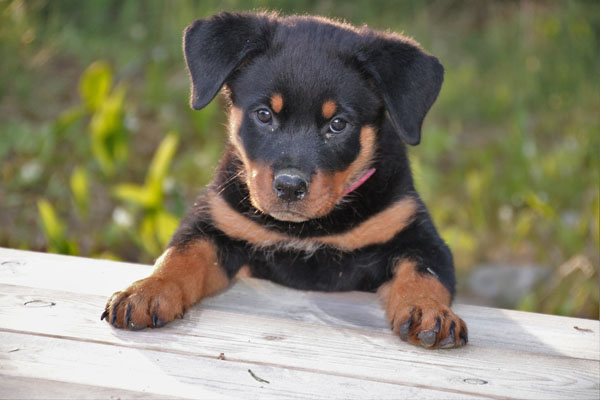
Preparing for a Puppy: The Secondary Shopping List
You have your critical pieces of preparing for a puppy. They’ll get you home safe and sound and settled in. Then you can focus on the next phase of preparation. (Nope, you’re not quite finished) Once you make it through that first night, it’s time to think about these needs. Or you can always get everything in one shot. The choice is yours.
Identification
Be honest: you didn’t let that puppy out of your arms the entire ride home. Now that you’re home and getting to know each other, though, it’s time to consider practicality. Every puppy needs a collar or harness. Make sure you choose the proper size and remember that adjustability is your best friend. Puppies GROW, and you’ll go through several before your kiddo reaches adult size. You’ll also want a leash and the all-important poop bags.
Then comes the important part: the ID tag. You want to make sure everyone knows who your puppy is and that they belong to you. So why is this on the secondary list? Well, have you come up with a name for your puppy yet? Maybe not. Sometimes you need to spend a lot of time with your kiddo before settling on that important detail. And while preparing for a puppy to go missing sounds horrible, it’s part of the process. An ID tag increases the chances of your pup finding their way back to you.
Grooming
You get a fresh and clean puppy upon “delivery.” However, just like small children, they never stay that way. Eventually, messy paws and hair occur. So you’ll want to have grooming supplies on hand. It’s also a good idea to introduce the bathing and cleaning process to your puppy as early as possible, so they adjust and don’t get frightened during bathtime. You’ll find yourself with a more compliant canine down the road. Once the two of you settle down, you can arm yourself with all of your puppy-cleaning needs:
- Brush
- Dog shampoo
- Dog wipes
- Nail clippers
- Toothbrush and toothpaste
Preparing for a Puppy: People
I know what you’re thinking – PEOPLE?! Preparing for a puppy means checking off a lot of important people. You’re important, but you also need a critical team in your corner. Without them, you’ll find yourself in a lot of trouble. Not to worry, though: these people are easy to track down. You can talk with your family and friends for recommendations. And once you check off the first name on the list, they can point you in the others’ direction. It’s an excellent game of dominos. And when you reach the end, you have a perfect circle of protection for your fluffy family member.
- Veterinarian: Your puppy needs vaccines, dewormings, routine care, and a neuter or spay. Find someone you trust and can chat with about any questions.
- Emergency Vet: Accidents happen. Unless your vet is open 24/7, make sure you know who IS.
- Pet Insurance: EVERY puppy deserves pet insurance. You never know what may happen down the road.
- Dog Trainer: If you’re not comfortable training your puppy, find someone you can work with.
- Pet-Sitter/Dog-Walker: You may need to make trips. Or you could work long hours. You want someone you trust who can step in for you.
- Boarding: If you’re facing a long time away, and your pet-sitter or family isn’t available, you need to consider a kennel.
Off You Go!
And you’ve done it! See? Preparing for a puppy isn’t so terrible. Now you can focus on playing and bonding with your new family member.
While learning all of their bad habits, discovering the puppy-proofing you missed and realizing you forgot something at the store. It’s kind of standard when you get a new puppy, and everyone does it. Don’t worry, though – you’ll get the hang of things.

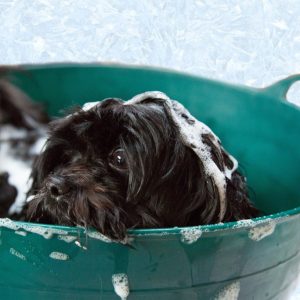



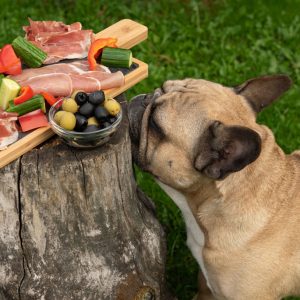
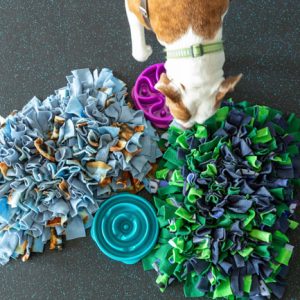


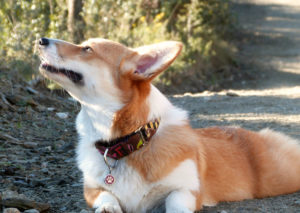


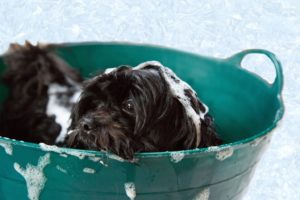
No comment yet, add your voice below!